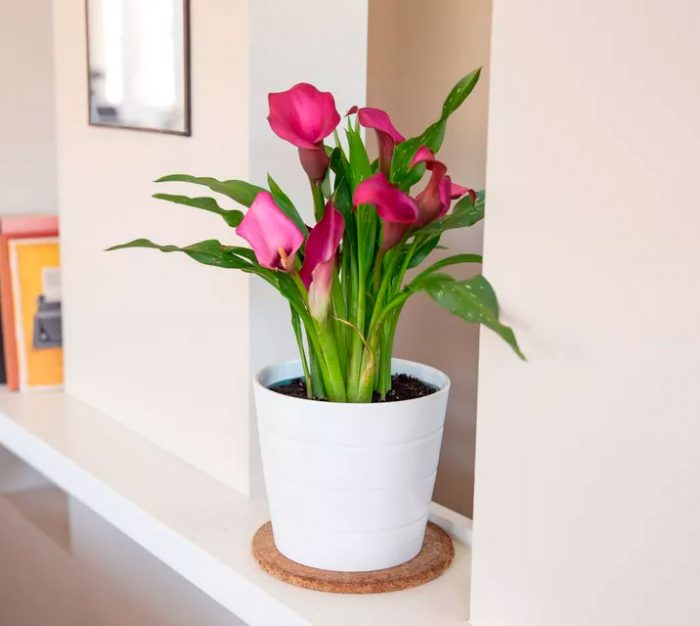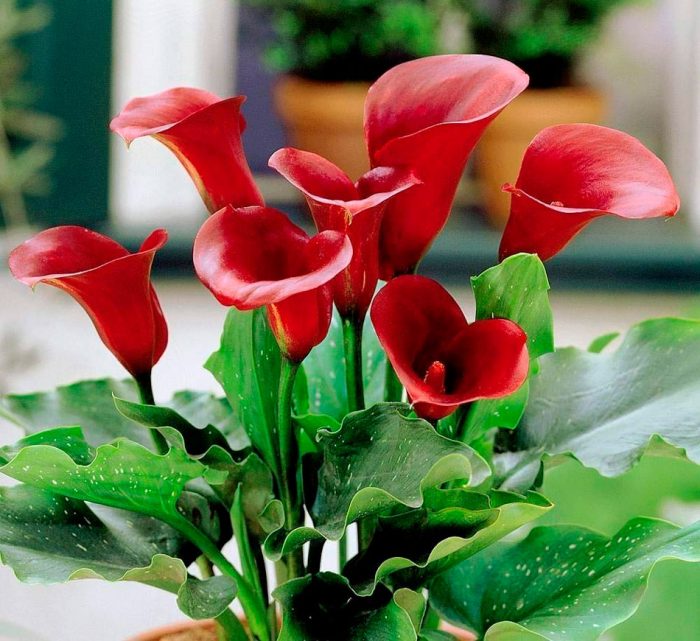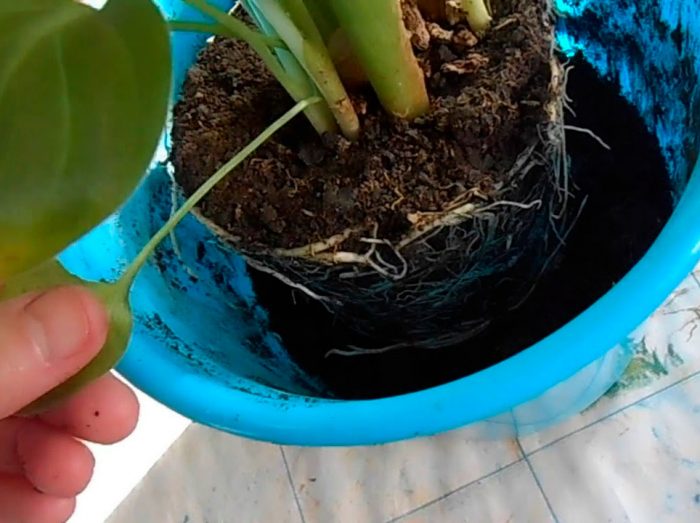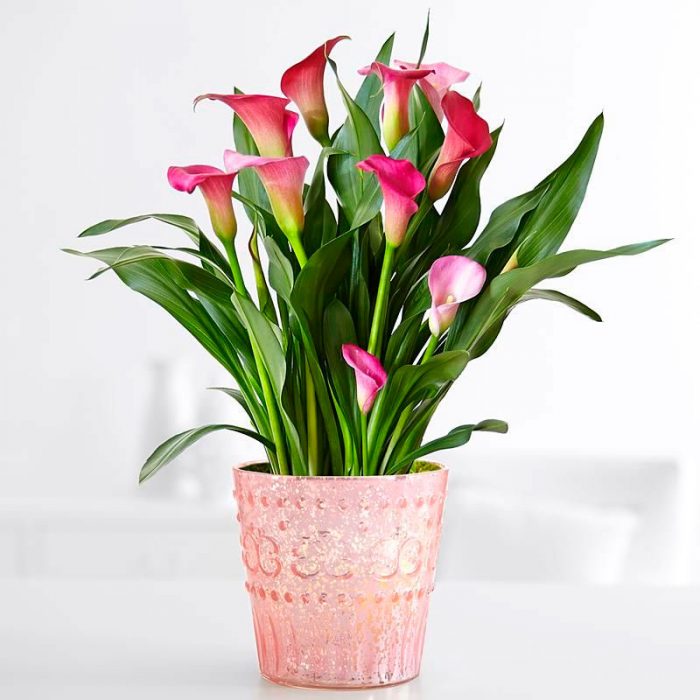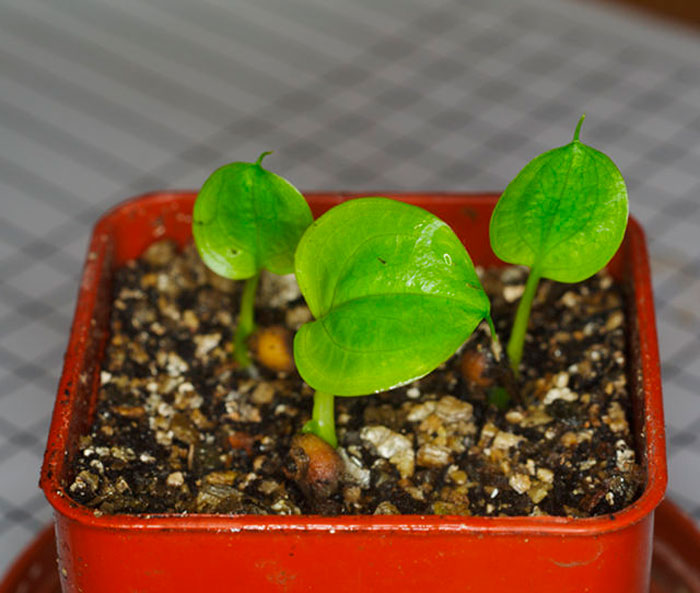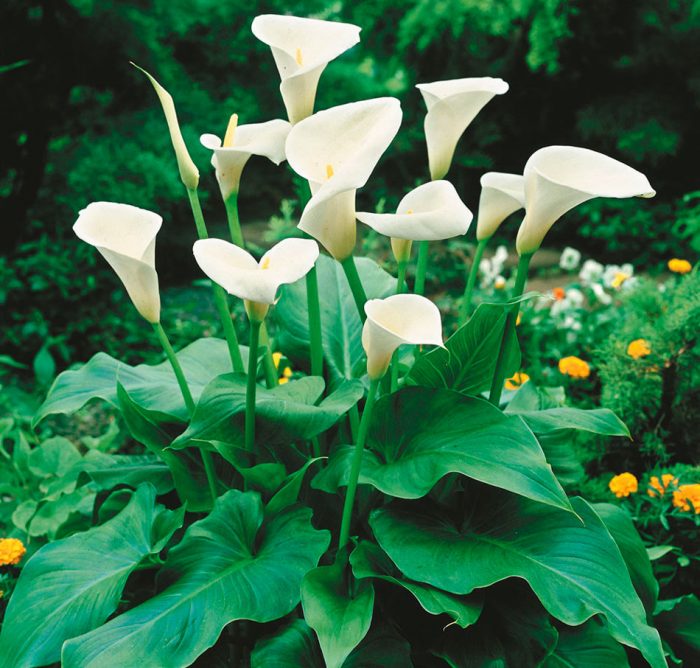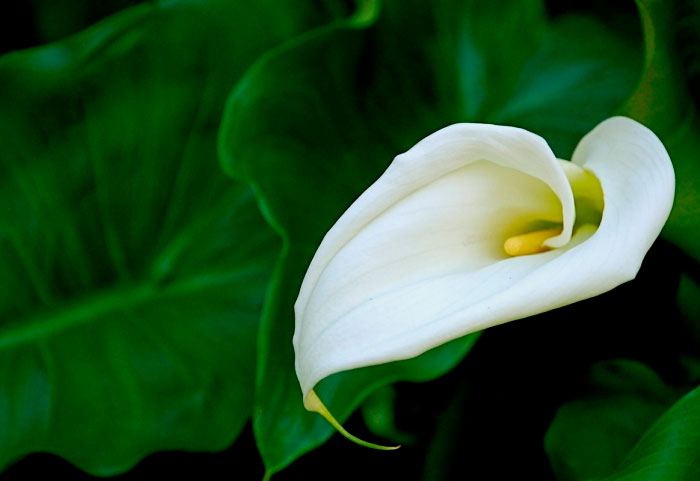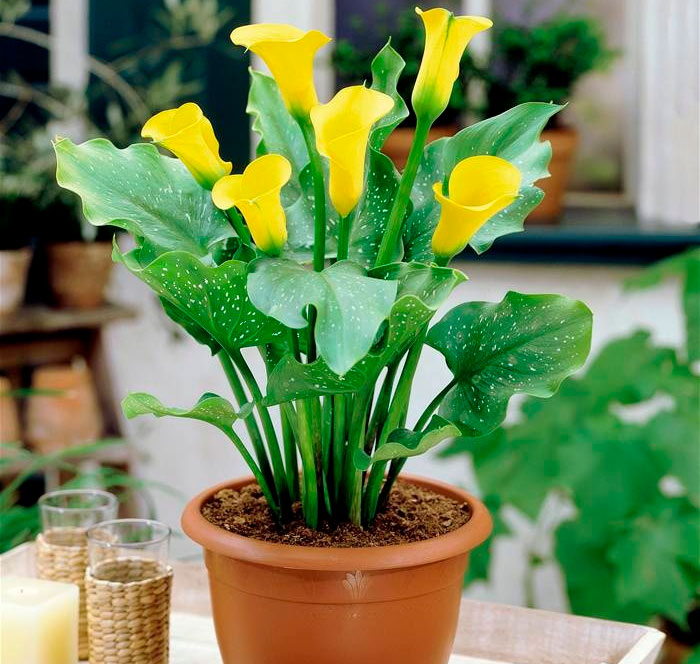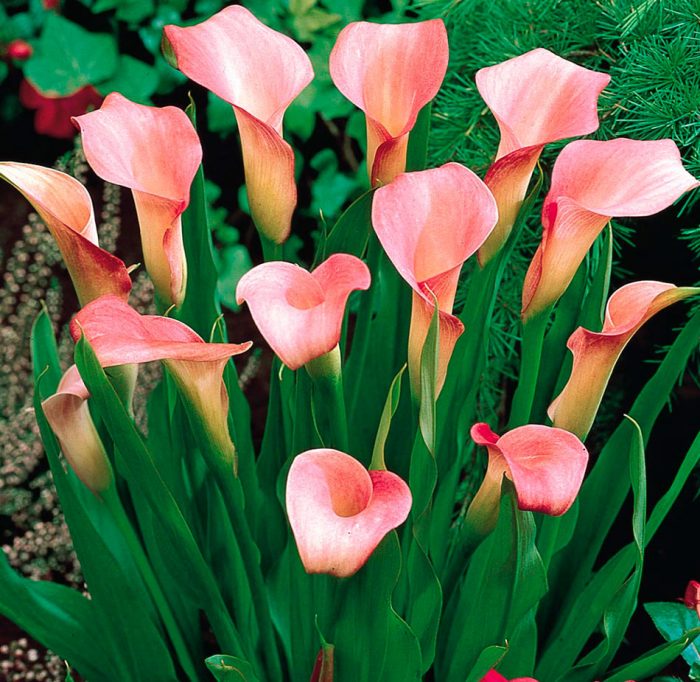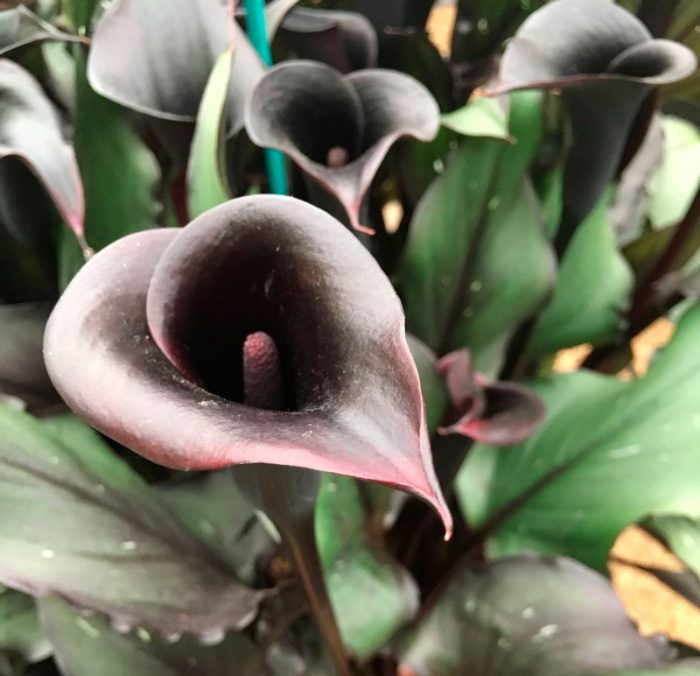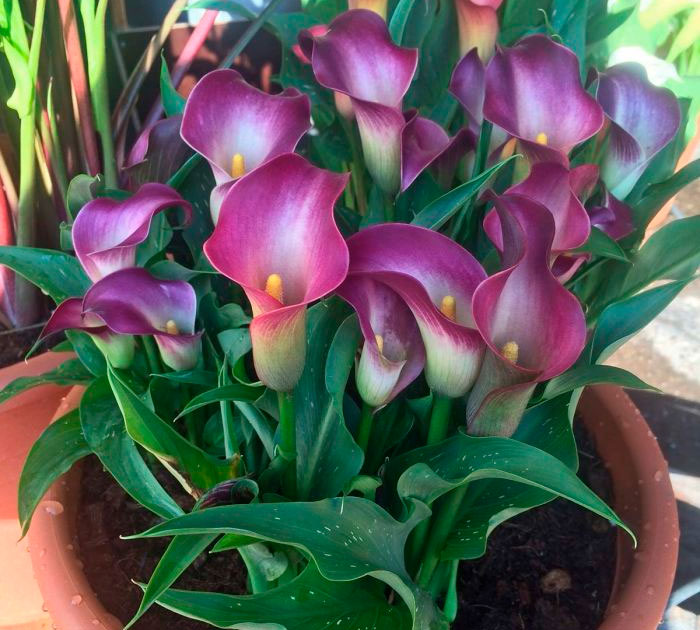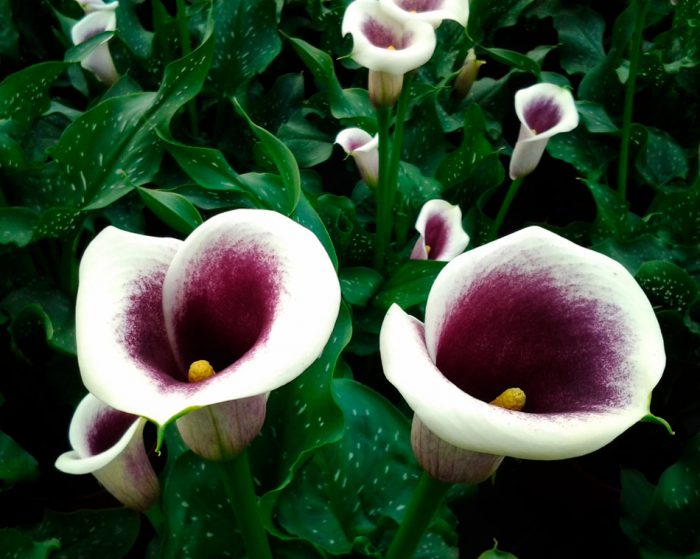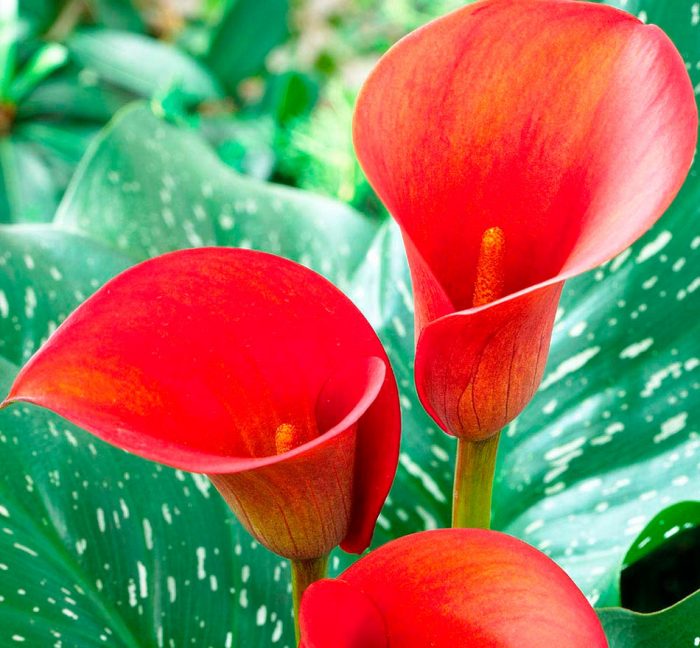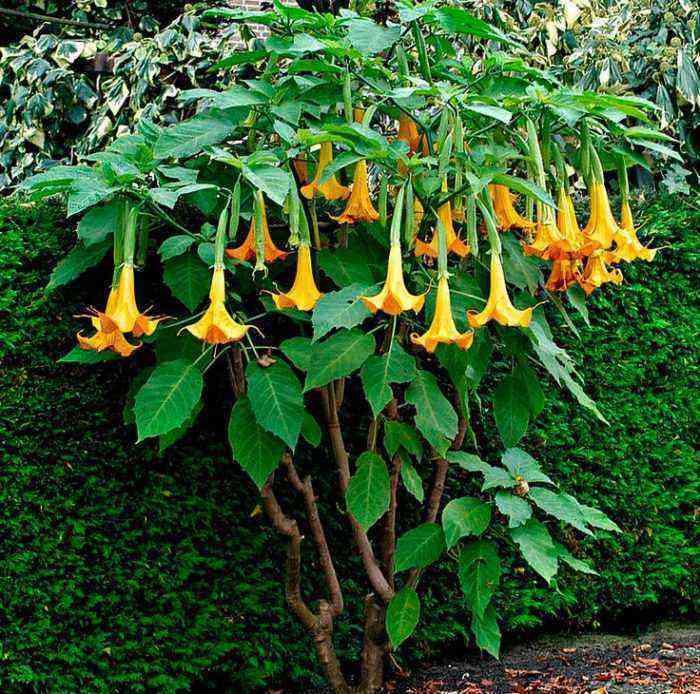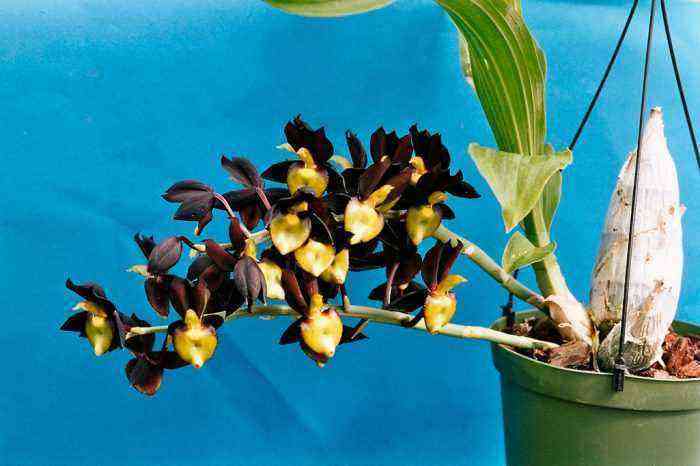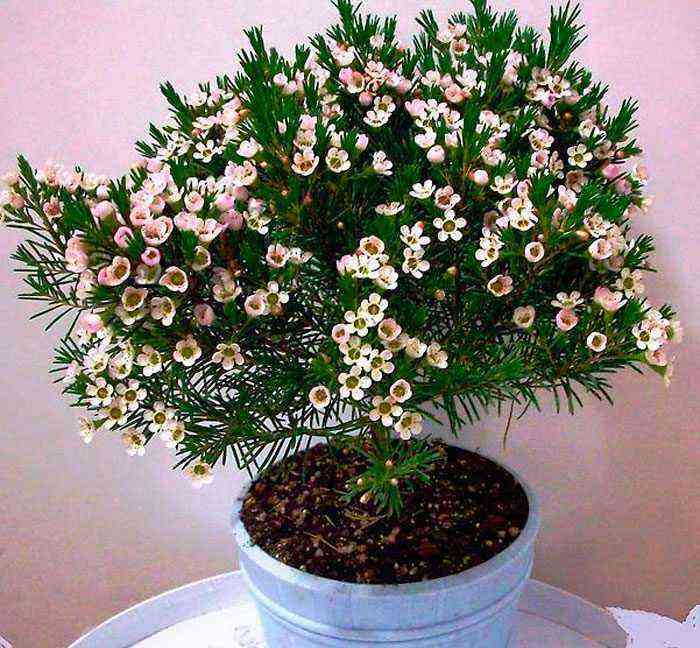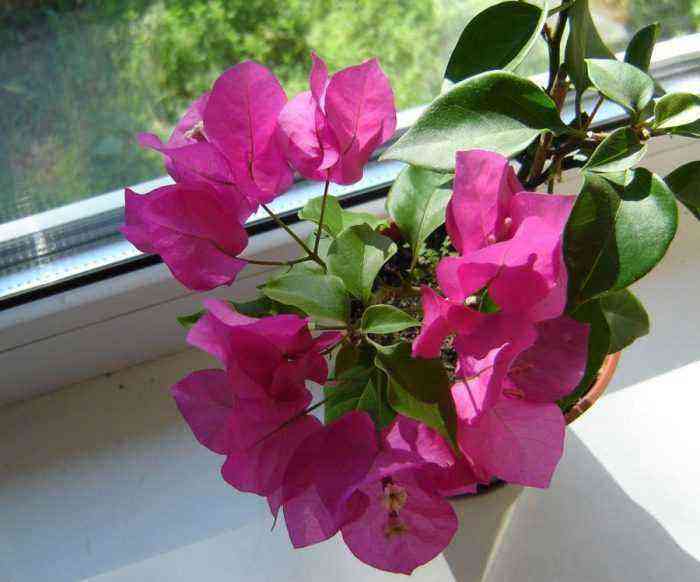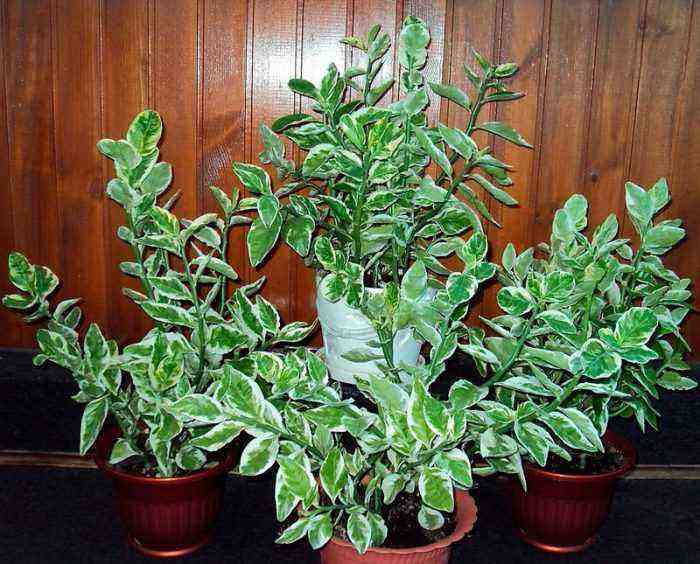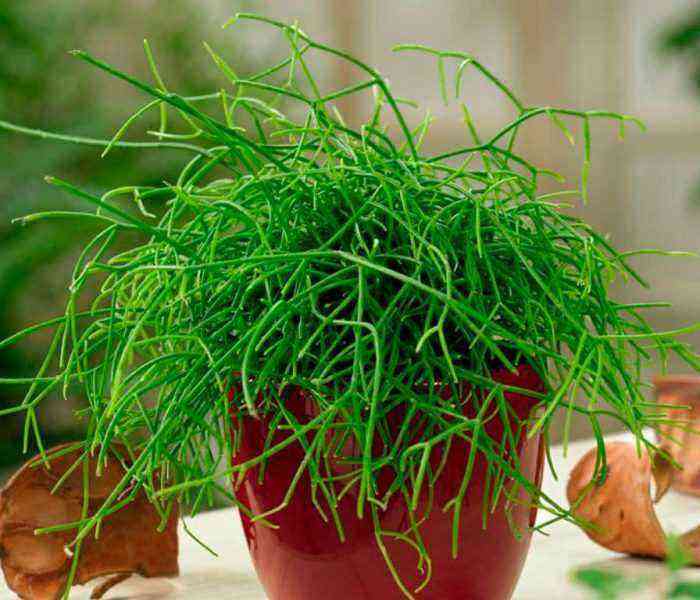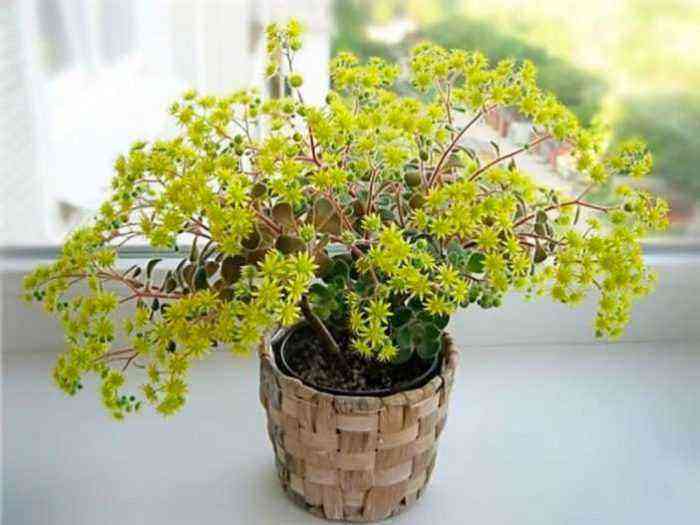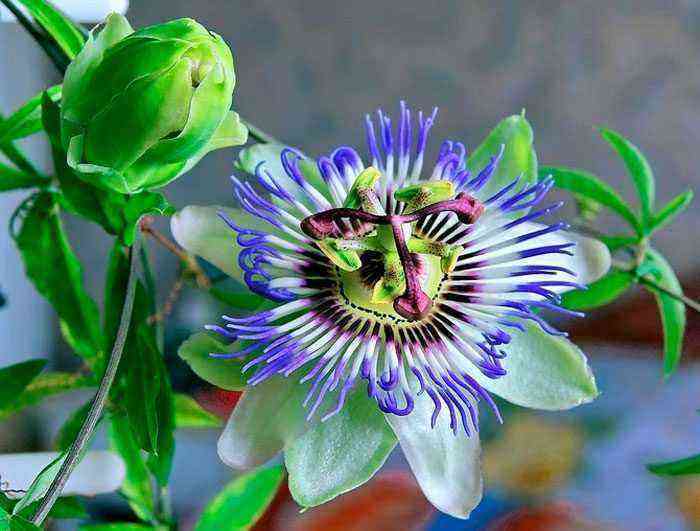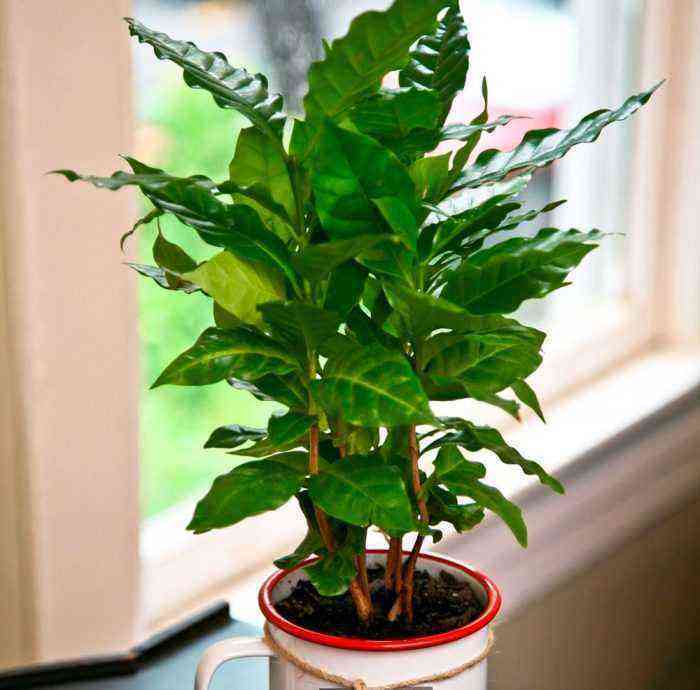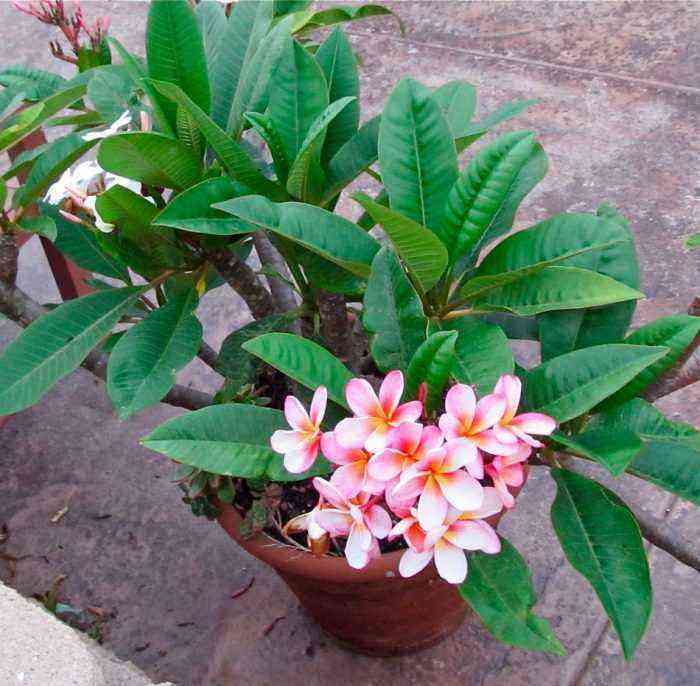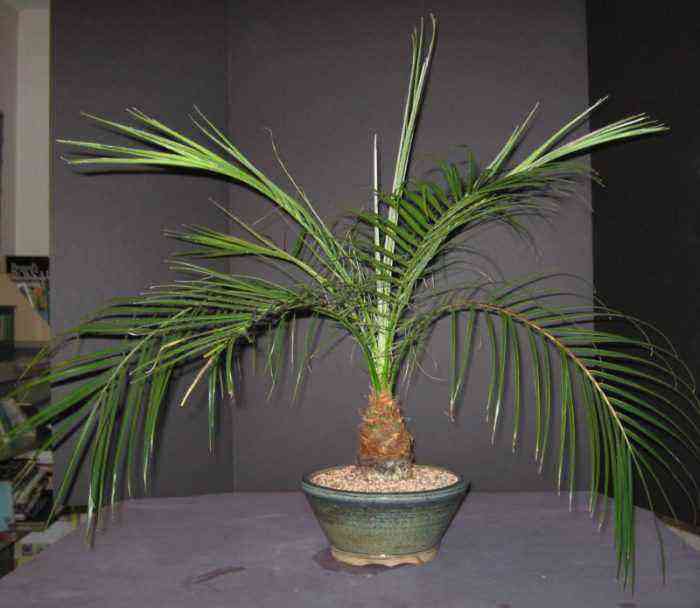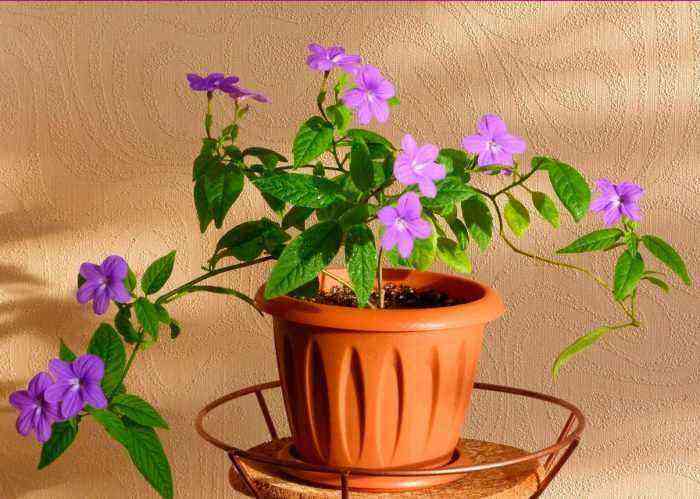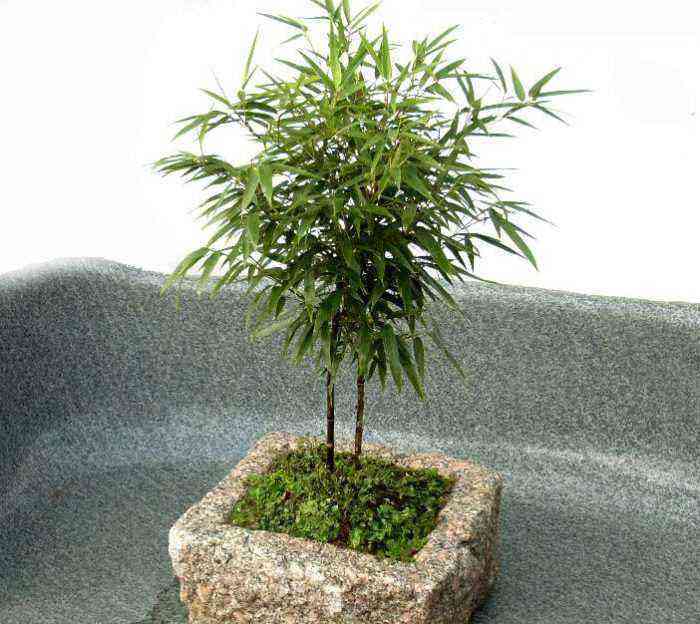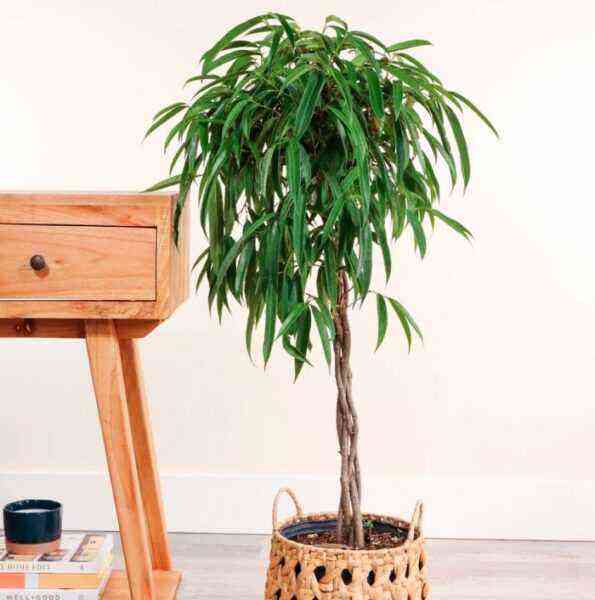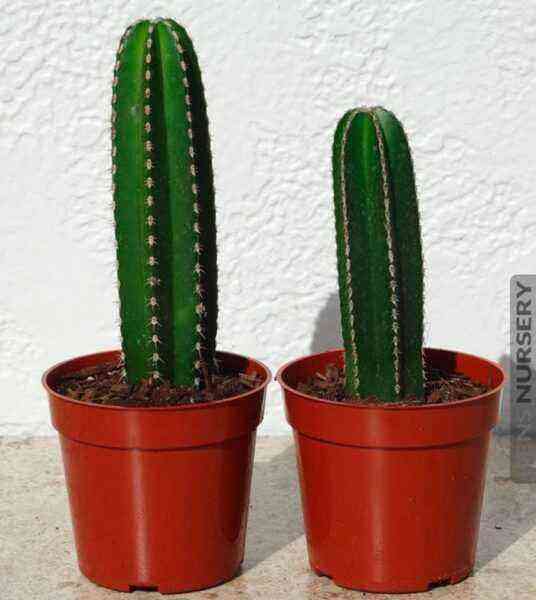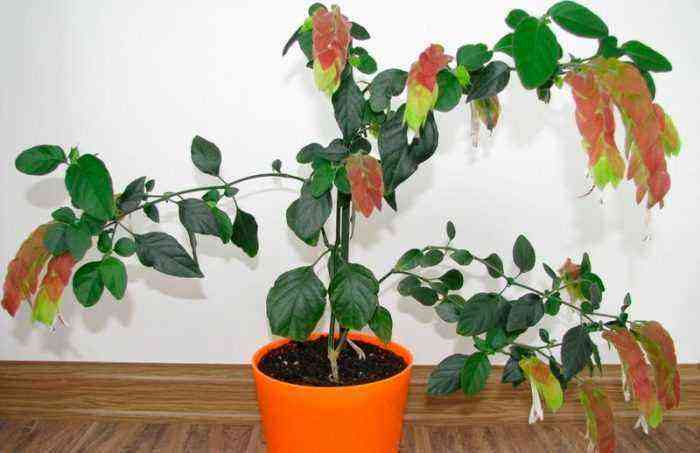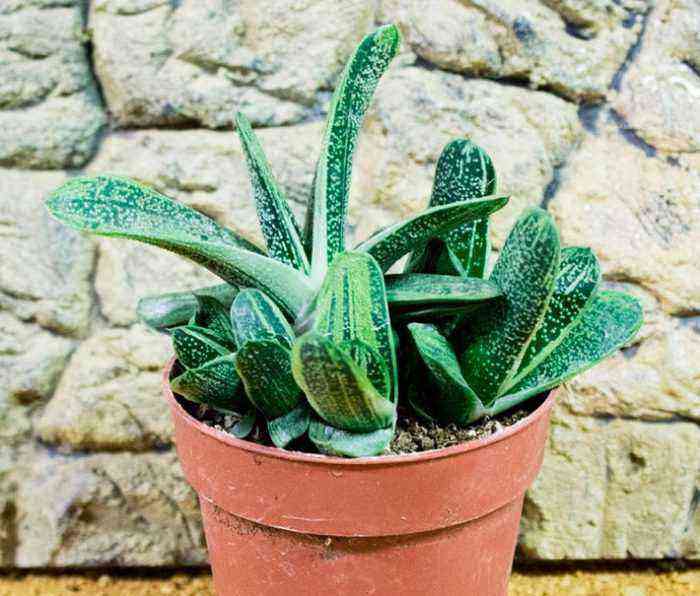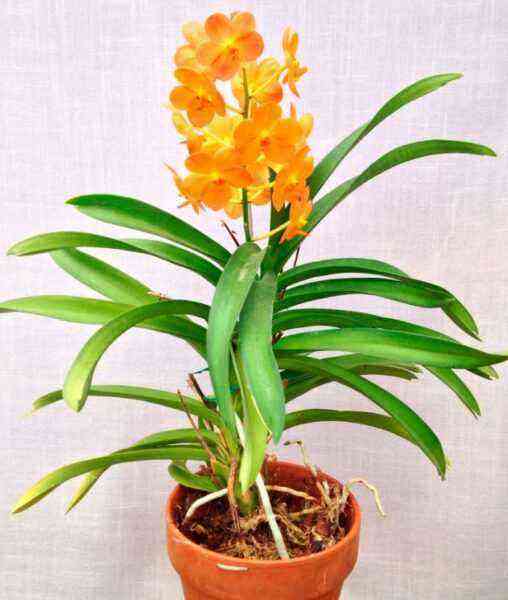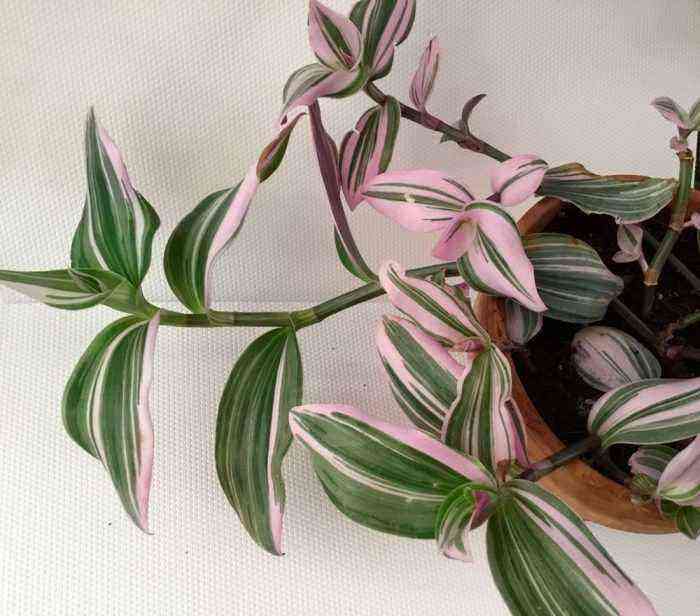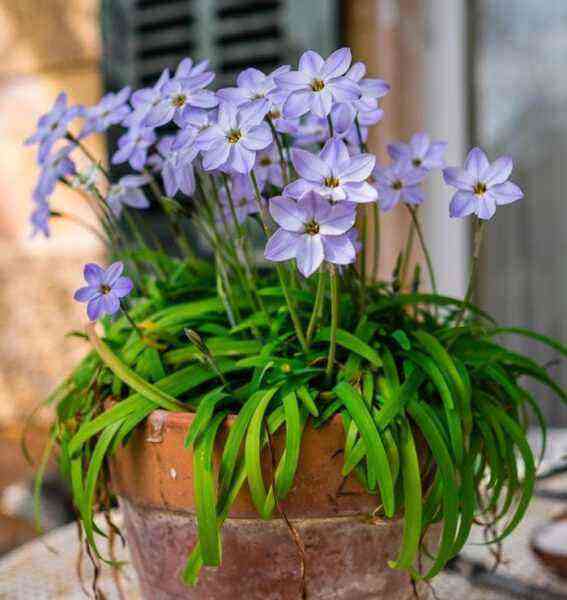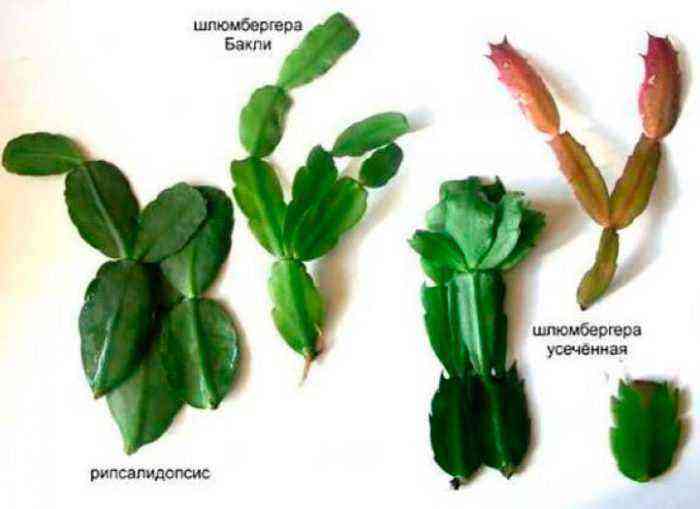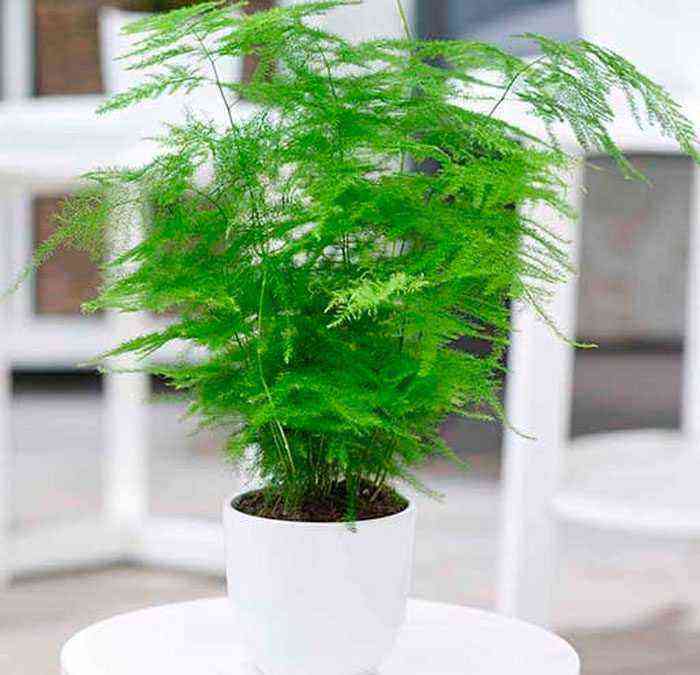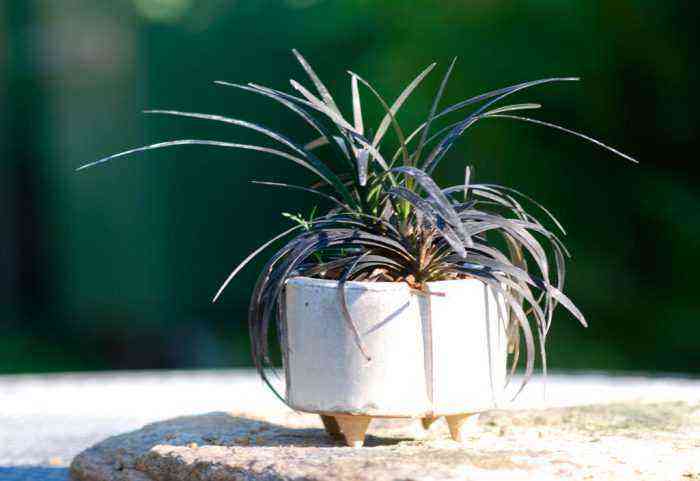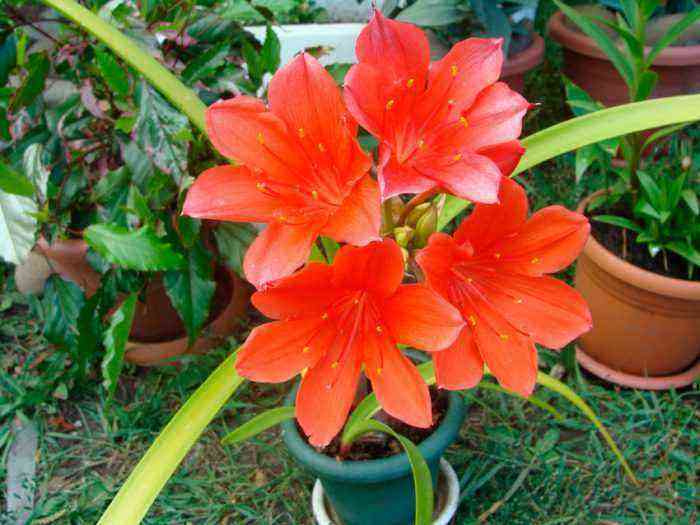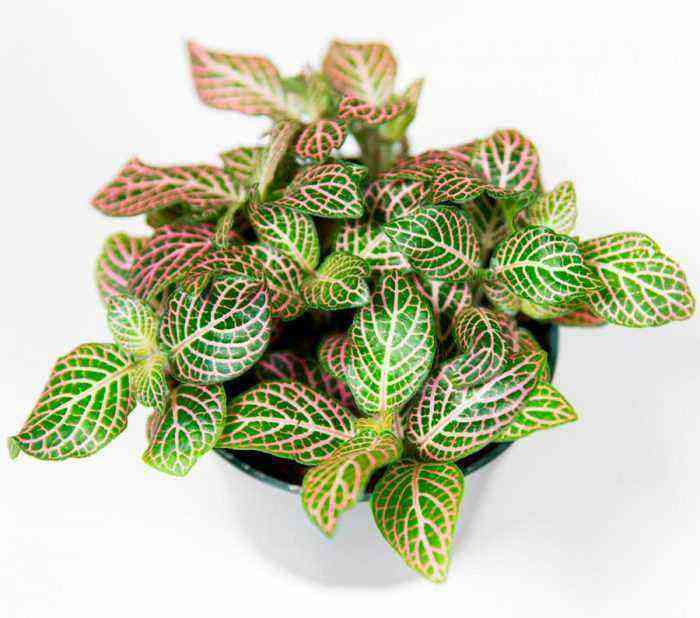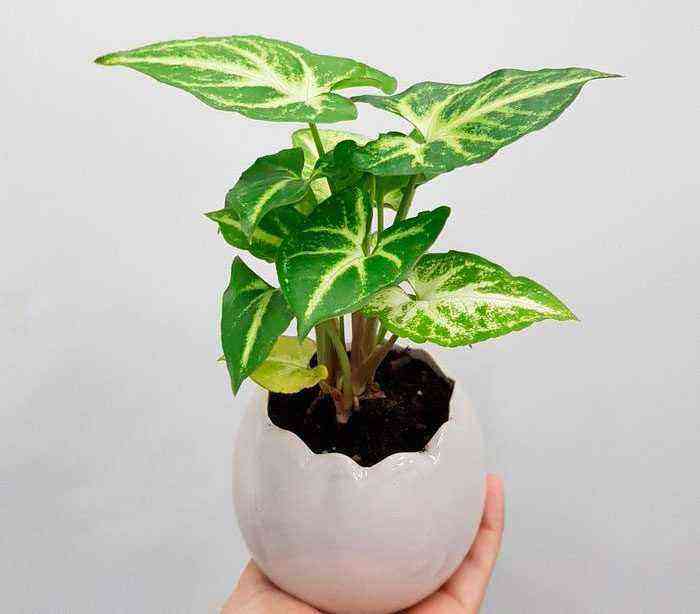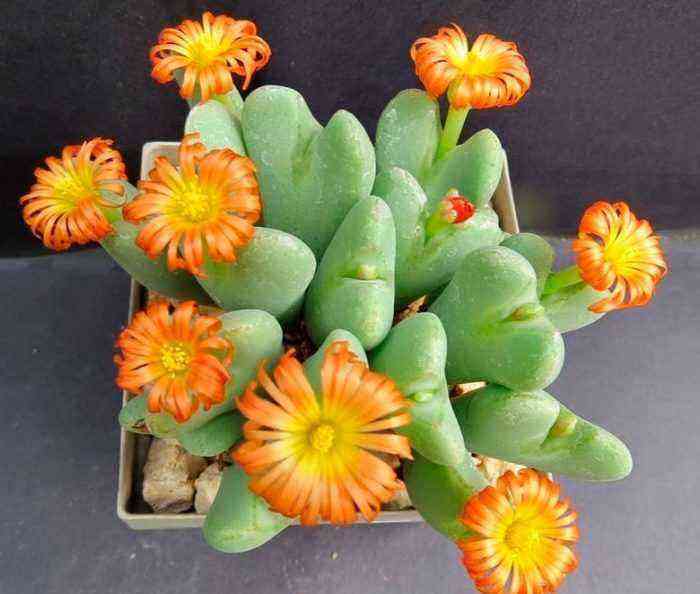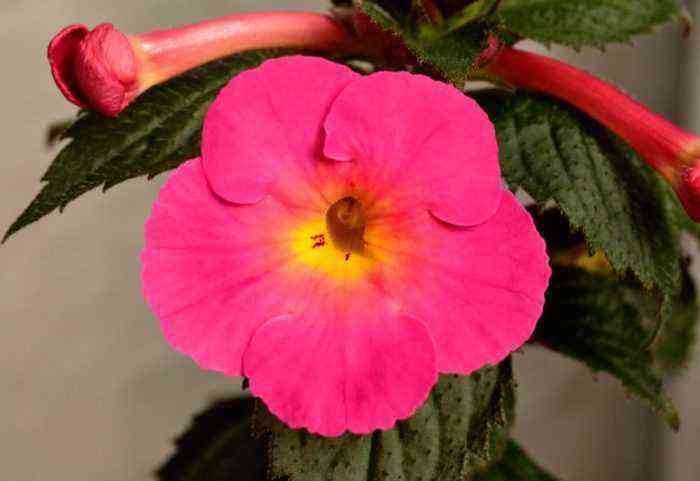The perennial herb Zantedeschia, also called calla, is a member of the Aroid family. During flowering, an erect peduncle forms at the bush, on which a graceful flower opens. This plant is fast-growing, while the bush grows quite large. Large basal leaf plates are colored dark green. In large bushes, leaves can be about 100 centimeters long and up to 20 centimeters wide.
A flowering bush forms a long arrow, at the top of which an inflorescence-ear-shaped spike is formed, wrapped in a tubular sheet-blanket. The bush blooms in autumn, and fades only in late winter or early spring. This flower comes from Africa, where it is found in the southern part, and also on the island of Madeira in the Atlantic Ocean, which is located near the northwestern African coast.
The plant is quite popular with flower growers due to its spectacular appearance. It does not require any special care skills. Calla lilies are also cultivated in greenhouses for cutting flowers.
Brief description of cultivation
- Temperature… This thermophilic plant reacts negatively to temperature fluctuations in the room.
- Air humidity… The humidity level in the air should be quite high.
- Illumination… Where the plant is from, it prefers sunny locations with plenty of bright light.
- Watering… Differs in moisture-loving. In nature, it is found in swampy wet areas.
- Soil mixture… You can buy a ready-made substrate in a specialty store or prepare it yourself.
- Fertilizer… Systematic feeding is required.
- Flowering… In order for the zantedeschia to bloom magnificently, it must be transplanted in time, while separating the offspring, and also do not forget to cut off the flowers that have begun to fade.
- Transfer… It is carried out regularly once every couple of years.
- Trimming… It is necessary to cut off young shoots in time.
- Features of care… The plant must be dormant for at least 2 months.
Zantedeskia care at home
Temperature conditions
For the normal development and growth of room zantedeschia, you need warmth: from 20 to 25 degrees. The plant is able to survive during a sudden freeze, but only if it is short-lived. Reacts extremely negatively to a draft: it stops blooming and can even get sick. A place near a working heating device is not suitable for a flower, since the level of air humidity there is very low.
Air humidity
For this plant, it is necessary to maintain high humidity. It responds well to regular humidification from a spray bottle. On hot summer days, do not forget to moisturize the flower at least once a day. If the air humidity is optimal, then especially large and powerful flowers will form on the bush. Do not forget to systematically arrange a warm shower for the bush.
Remember that calla is badly damaged by low air humidity, as well as a layer of dust on the surface of the foliage. During the heating season, it is recommended to place an open vessel with water next to the flower. Also, pre-moistened expanded clay can be poured into the pallet, and a pot with zantedeskia is placed on top of it.
Illumination
This plant needs enough light all year round. It can grow in light shade, while the bush develops normally and forms inflorescences. However, if there is very little light, the calla lilies will stop flowering. If this happened, then the bush needs to be rearranged to a more illuminated place. However, sunlight must be diffused. If the lighting is too intense, it will negatively affect the flowering.
Watering
Since in natural conditions, zantedeschia is most often found in swampy damp places, special attention should be paid to watering in a room culture. It should be plentiful, especially in the spring and summer. In the hot summer months, the soil mixture in the flower pot must be moistened at least 2 times a week. In no case do not allow the earthen coma to dry out.
It is also worth paying attention to the fact that the substrate should be slightly damp, but not wet. Do not forget to empty the pan after watering, otherwise rot may develop on the roots.
In the middle of summer, watering should be moderate. In winter, it is rarely carried out, but only if the air temperature in the room is at least 22 degrees. Use cold water (at least room temperature).
Soil mixture
Pure peat is suitable for planting or transplanting indoor calla lilies. But in order to exclude stagnation of moisture in it, several more holes are made at the bottom of the pot, and a thicker layer of drainage is also made.
However, for calla lilies, a soil mixture consisting of humus, peat, clay-sod soil and sand (1: 1: 2: 1) is best suited. This substrate will be able to provide the plant with full development.
Additional fertilizing
If you feed indoor calla lilies in time, then it will always look spectacular. Its foliage will be rich green, and the flowers will be large on tall, powerful peduncles. Top dressing is carried out only during the growing season and flowering.
In order for the bush to build up the green mass well, nitrogen fertilizers are used, and for the flowering to be timely and lush, nutrient compositions with a high content of potassium and phosphorus are used. Top dressing is carried out with a frequency of 2 times a month.
Experts advise feeding the flowering bush on foliage. For this, a solution of potassium humate is used.
Flowering
The first time the bush blooms after it turns 2 years old. The peduncle appears in the fall, while flowers adorn the plant throughout the winter months.
Mature, mature shrubs begin to bloom in the first weeks of spring. In order for the flowering to be lush, it is imperative to provide the bush with a dormant period, the required amount of light, and do not forget to transplant it once every 1 or 2 years.
Zantedeschia transplant
The root system of the bush grows rather quickly, and it should be transplanted once every 1 years. When the flower becomes cramped in the pot, protruding roots can be seen on the surface of the substrate. The transplant is carried out in the spring or in the first days of November.
Pot selection
When transplanting calla lilies, you should choose a pot that is 15 mm larger in diameter than the old one. There must be small holes at the bottom of the pot. To begin with, a not very thick layer of drainage is laid on the bottom, after which a little substrate is poured into the pot.
The previously watered bush must be carefully removed from the old container, after which it is planted in a new pot. All voids should be filled with new soil mixture. To water the transplanted flower, water is used, the temperature of which is close to room temperature.
Trimming
During the growing season, young shoots can grow next to the bush. It is recommended to cut them off, as they will take away nutrients and moisture from the main bush. If pruning is done on time, the calla will bloom much faster, while the bush will be powerful and effective.
Useful Tips
Experienced growers, when growing room zantedeschia, recommend paying attention to the following points:
- in order for the flowering to be lush, it is necessary to cut off yellow and weakened leaf plates in time, as well as faded peduncles;
- in summer, if possible, the bush should be transferred to the balcony or garden, while a place protected from drafts and direct sunlight is chosen for it;
- the optimal duration of the dormant period is from one and a half to two months, during this time the bush will have time to rest well and gain strength for a new flowering;
- so that the calla could “fall asleep” in time, when it fades and the foliage dries up, you need to stop watering it.
Possible problems
- Spots on dark foliage… This means that indoor zantedeschia is affected by a fungal disease. The reason for its development is a too thin drainage layer or an excessively dense substrate that does not allow air to pass through well.
- Root rot… It develops due to stagnation of liquid in the soil mixture. Rot appears at the base of the peduncles and leaf plates, after a while they break.
- The foliage loses its turgor and sags… This suggests that the bush was exposed to a draft. Move it to a more suitable place.
- Yellow spot… On the surface of the foliage, ring-shaped spots of yellow color are formed. In this case, the leaves become thinner and become curly. The carriers of such a disease are thrips, which should also be eliminated in a timely manner.
- vermin… Most often, thrips, aphids, spider mites and scale insects settle on the plant. To destroy them, acaricidal and insecticidal agents are used.
Methods of reproduction
Reproduction by shoots
Zantedeschia can be propagated by shoots after it finishes blooming. The offshoots (shoots) formed near the parent bush should be carefully torn off and planted in individual spacious pots, while they are buried into the substrate by at least 10 centimeters. If the process is properly deepened, this will prevent lodging of the leaf plates.
Outgrowths grow from babies (root necks), which are formed on the parent rhizome. In this regard, if necessary, you can simply separate the children before the offspring appear and plant them in individual wide pots. After 15–20 days, more powerful young shoots should appear from them than if the shoots had formed near the parent bush.
Cultivation from seeds
Calla can be grown from seeds. For successful germination, they need warmth (at least 25-27 degrees). Fortified young plants should be opened. To do this, they are transplanted into separate pots and at the same time the root is truncated, which is necessary for the active formation of lateral roots. Thanks to this, the root system will be strong, and the bush will better receive nutrients and moisture from the substrate. However, remember that a bush that has grown from seeds will bloom for the first time only after 5 years.
Types of zantedeskia with a photo
Ethiopian Zantedeschia (Zantedeschia aethiopica)
Such an unpretentious plant differs from other larger species in flowers. His bedspread is dazzlingly white, while the inflorescence of the cob is painted in a deep yellow hue. The height of the bush is about 1 meter, and the size of the cover is about 25 centimeters.
Zantedeschia odorous, or fragrant (Zantedeschia odorata)
This plant looks like the Ethiopian Zantedeschia. It differs only in that its flowers have a pungent smell of lily of the valley. This plant belongs to rare varieties.
Zantedeschia elliottiana
The flowers of this plant are only about 16 centimeters long. However, they are distinguished by a spectacular rich yellow bedspread. There are white specks on the surface of the green foliage. This variety was named after Stephen Elliot, an American botanist.
Zantedeschia rehmannii
This hybrid reaches a height of 0,4 to 0,5 m. It differs from other species and hybrids in long, elongated leaf plates. The width of the sheet plates reaches no more than 50 mm. The inflorescence of the plant is rich yellow, and the veil is pale pink.
Best hybrids:
Memories
The size of the bedspread is about 12 centimeters, it is painted in an unusual black shade with a burgundy tint. In this case, the inflorescence has the same color – burgundy-black. The height of the bush is up to 0,45–0,5 m.
Nashville (Nashville)
This plant has a narrowed and elongated perianth. He has a two-ton color – pink and white. The inflorescence is colored deep yellow. The size of the bedspread is about 12 centimeters. The height of the compact bush is about 0,45 m.
“Picasso”
The edge of the bedspread is white with a smooth transition to purple in the neckline. The length of the bedspread is up to 10 centimeters, and the peduncle is about 15 centimeters. One flower, after opening, can live for about 25 days. Dark green leaf plates are adorned with white specks that appear metallic in the sun.
Red Alert
The bush reaches a height of about 0,55 m. The flower consists of a red inflorescence and a not very large rich red veil. Glossy resilient bedspread as if covered with wax. On the surface of the foliage there are a large number of white specks.
Pink Mist. In such a plant, several peduncles appear simultaneously, reaching a height of about 0,35 m. The inflorescence is rich orange, and the veil is light pink. The height of the flower is about 10 centimeters.
Useful Properties
Zantedeskia is used in alternative medicine. This plant has a pronounced analgesic effect, and it is also used during the therapy of poisonous snake bites.
Any part of the calla lily contains a poisonous substance, however, drying and heat treatment tends to volatilize it. A tincture or decoction is prepared from finely chopped rhizomes, which are used for dropsy. For the treatment of osteomyelitis, foliage is used, which should be boiled in milk.



